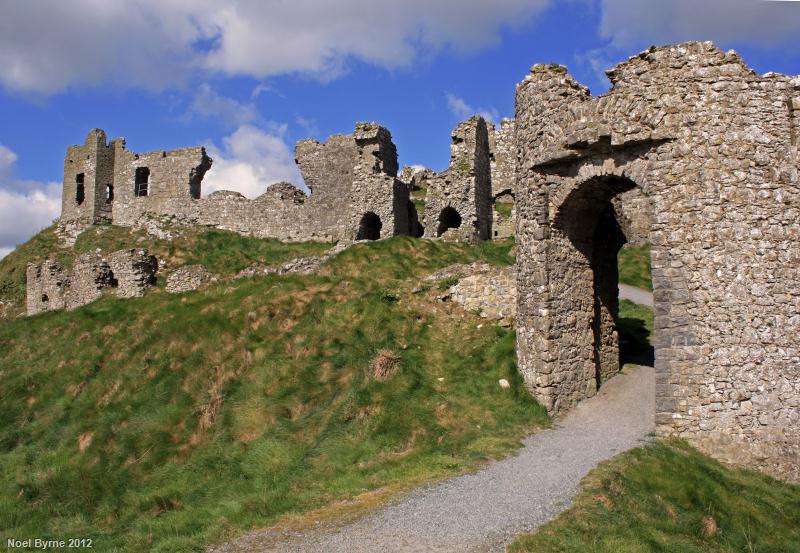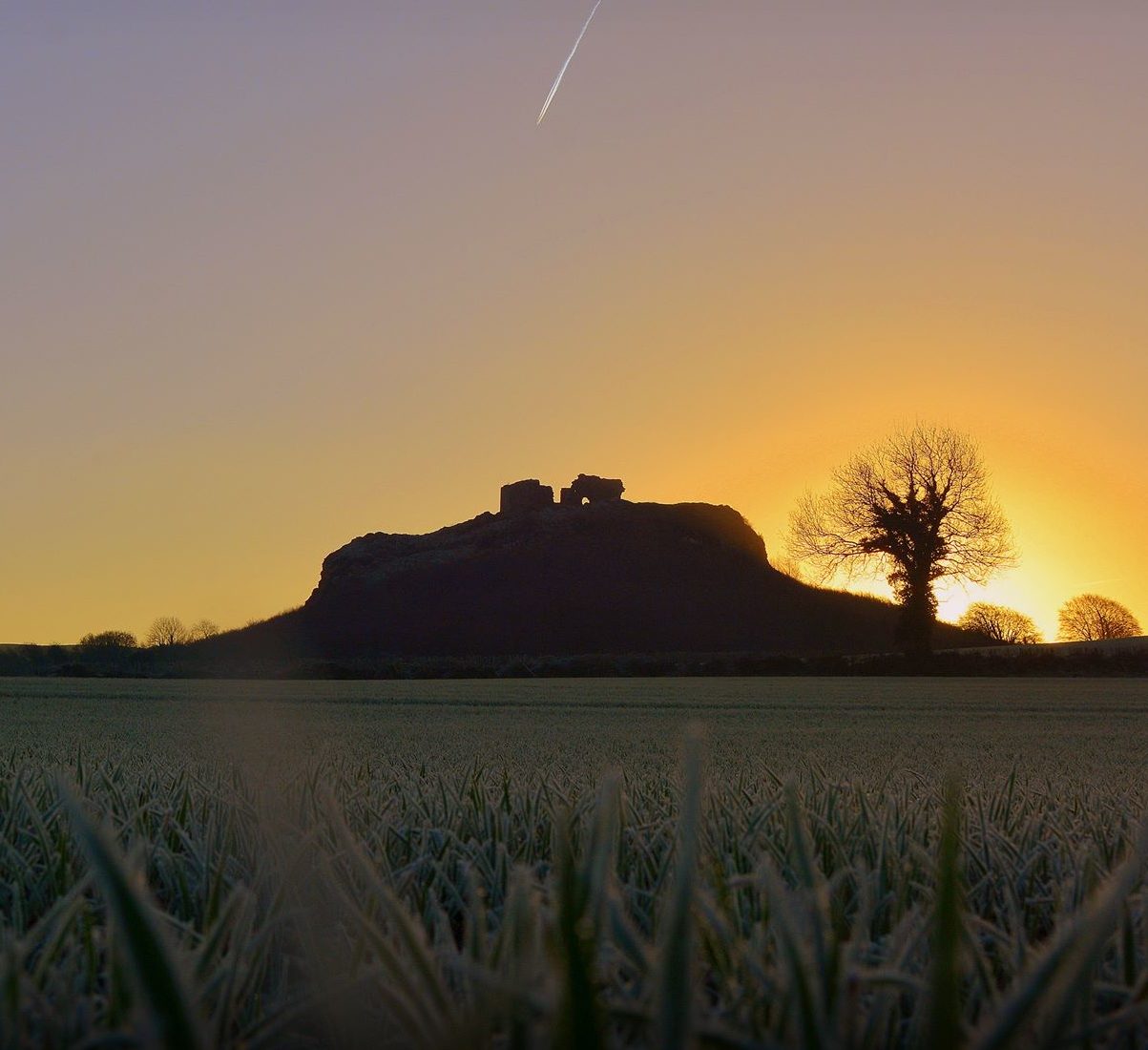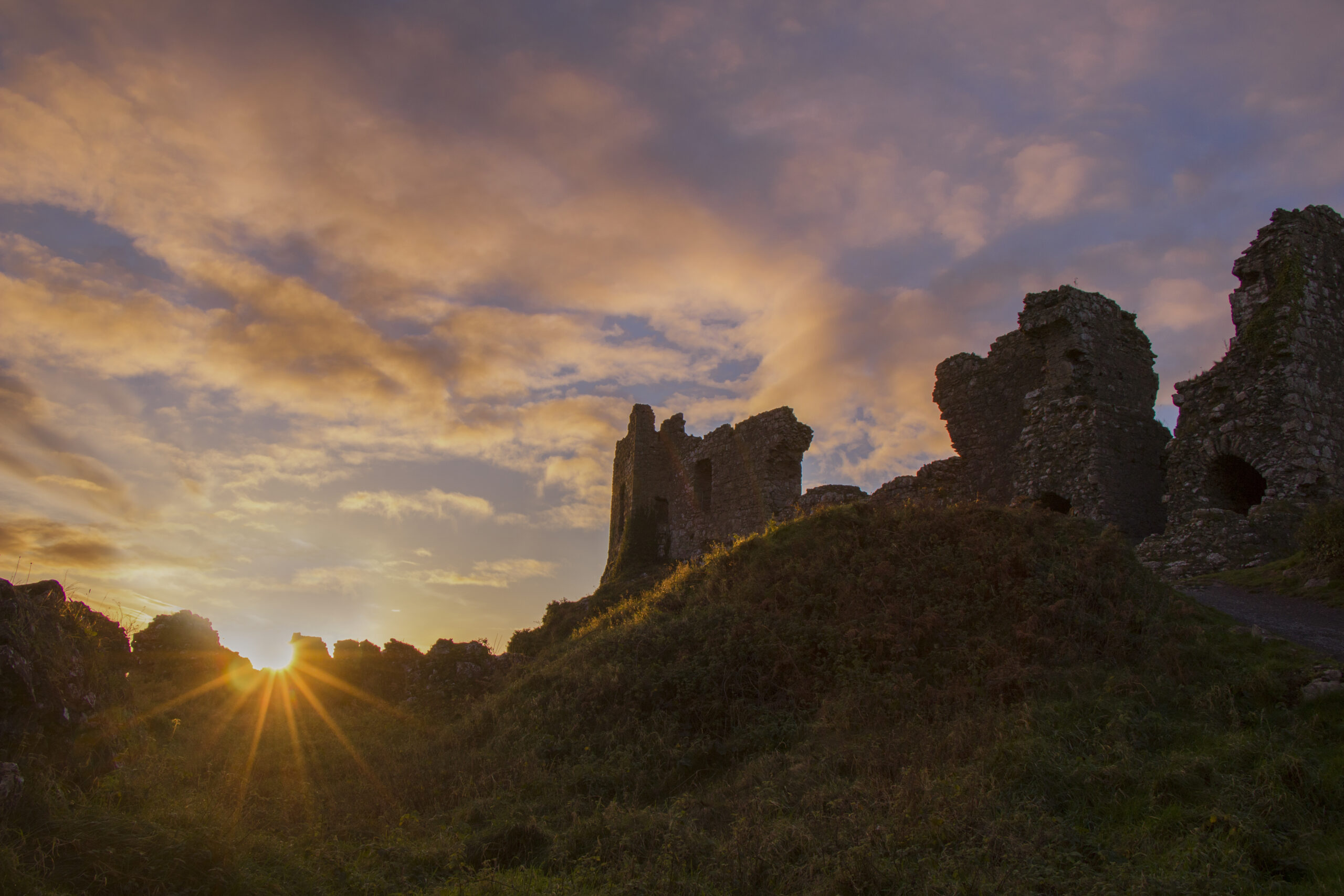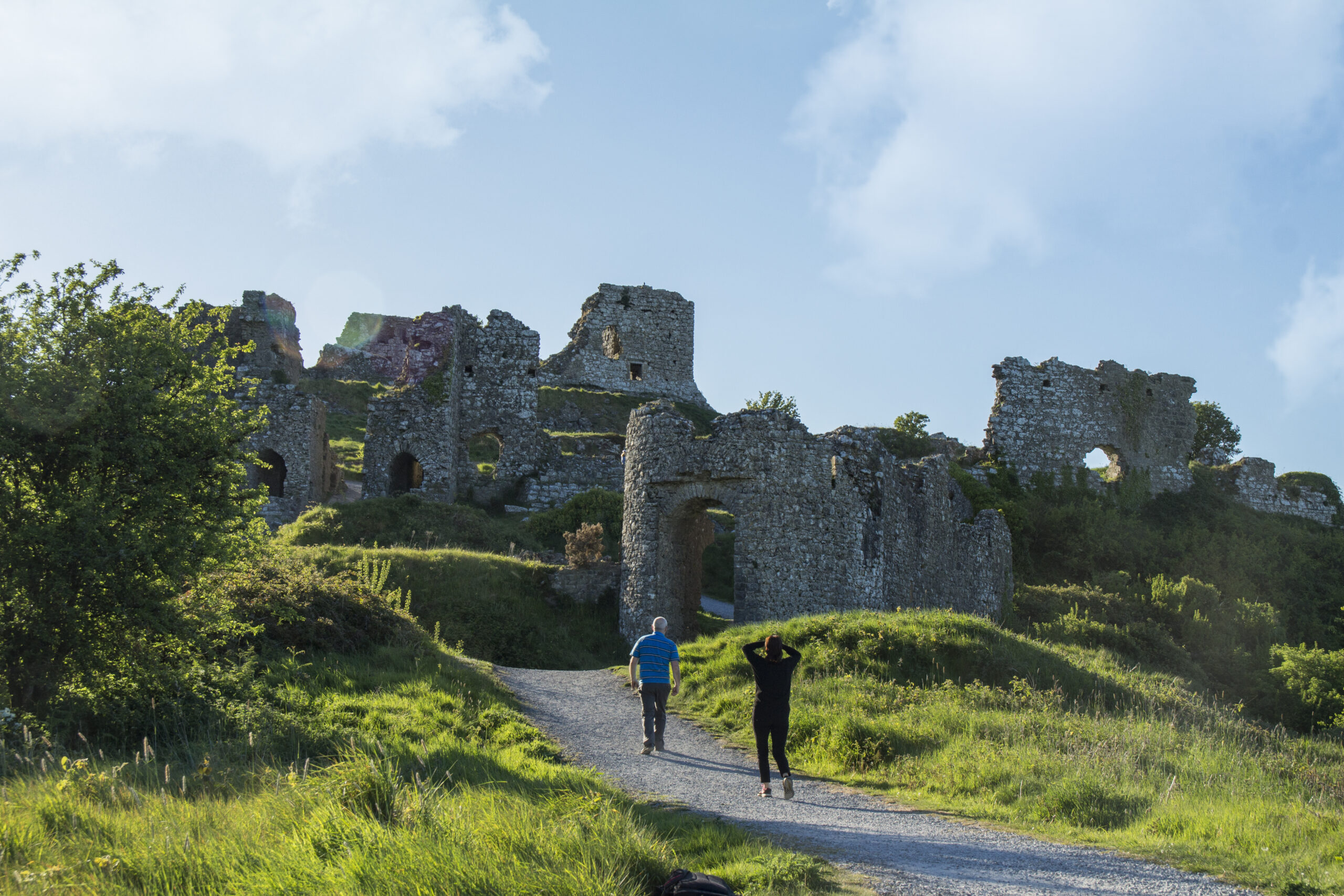Historic Site for over a 1,000 years
Perched on a hill-top, halfway between Portlaoise and Stradbally, historic stories of bloody vengeance, kidnapping, and intrigue await you. For well over a thousand years, the iconic Rock of Dunamase has seen Vikings, Normans, native tribes. Even Cromwell himself fight tooth-and-nail to seize control of this commanding site.
Today, you can wander to the very top and soak in the history. While there take in the most incredible views of our rich Laois landscape. And ... listen closely, for you might still hear the battle cry of a Viking warrior, or even the ominous thunder of approaching raiders on horseback.
Rock of Dunamase, First settled in the 800's
Stunning views of the surrounding countryside make the towering Rock of Dunamase a strategic place to build a fortress. Through the centuries, warriors have fought to control this limestone outcrop. The first known settlement on the rock was Dun Masc, an early Christian settlement that was pillaged in 842 by the Vikings. When the Normans arrived in Ireland in the late 1100s, Dunamase became the most important Anglo-Norman fortification in Laois.
Strongbow and Aoife
The Rock of Dunamase was part of the dowry of Aoife, the daughter of Diarmuid Mac Murrough, King of Leinster. She was given in marriage to the Norman conqueror Strongbow in 1170. When Isabel, the daughter of Strongbow and Aoife, wed William Marshal, Earl of Pembroke, Dunamase was part of her marriage portion. It is likely that Marshal carried out some building on the rock when he lived there between 1208 and 1213. However it is thought that most of the castle dates further back.





